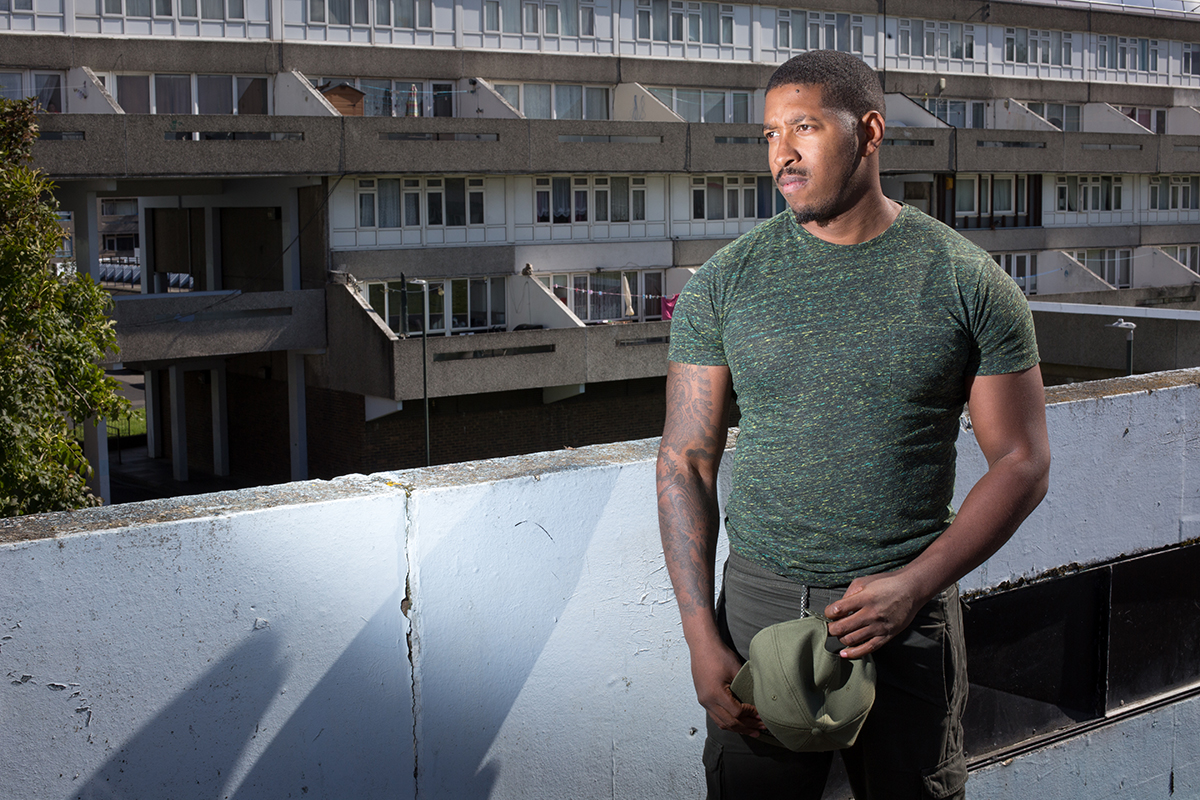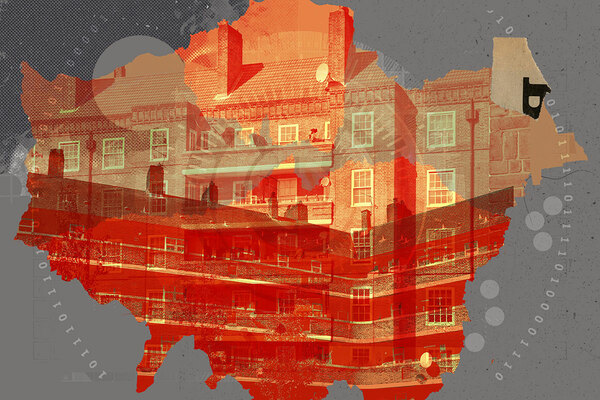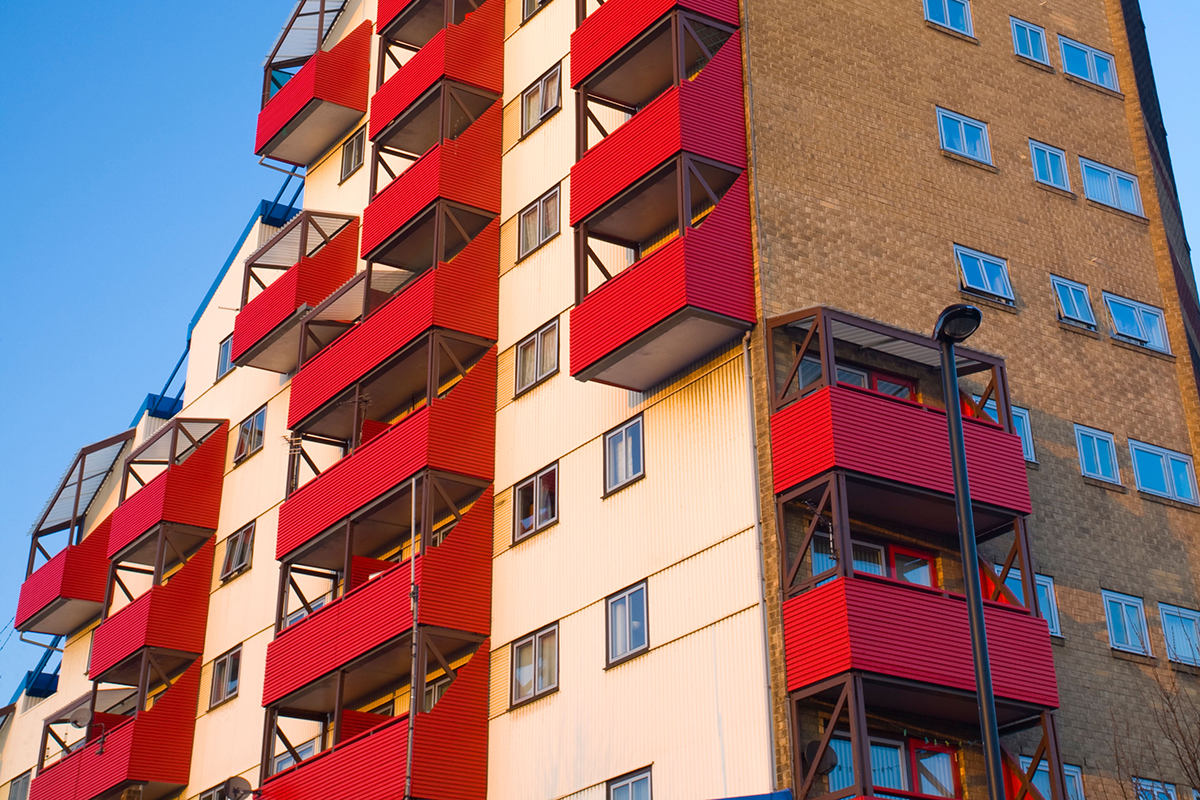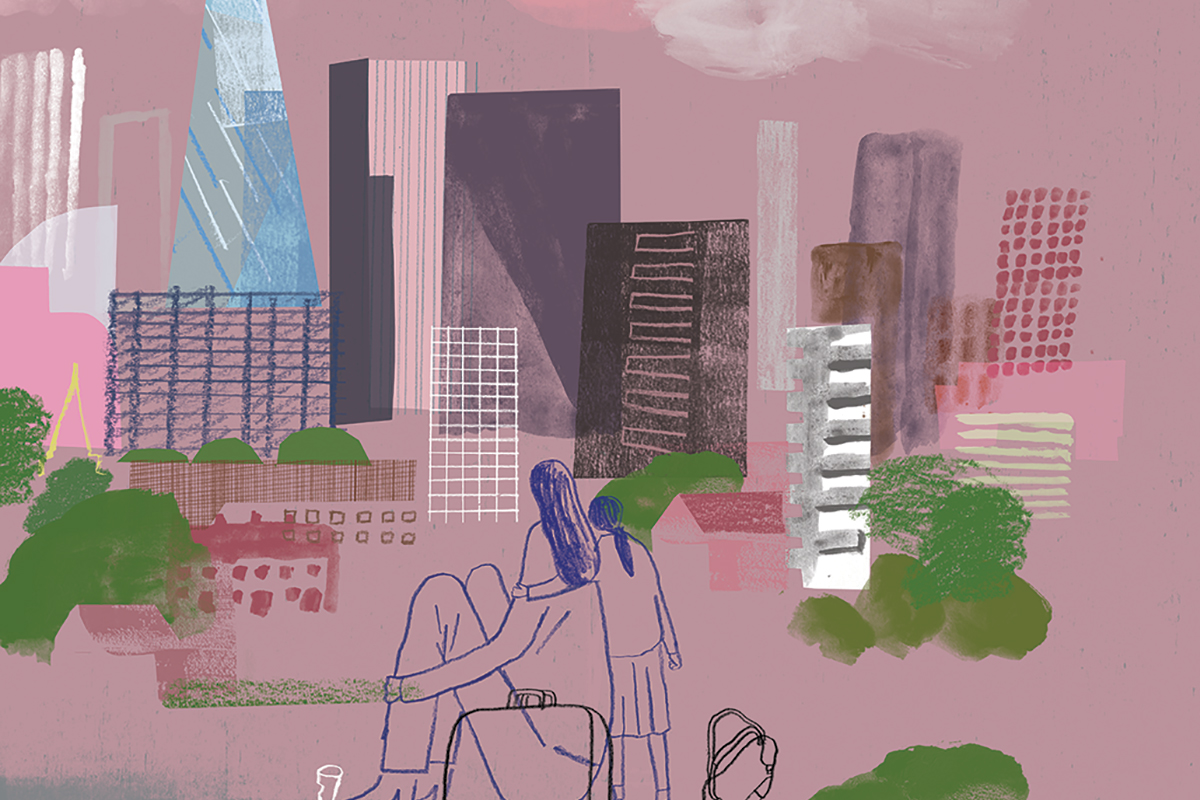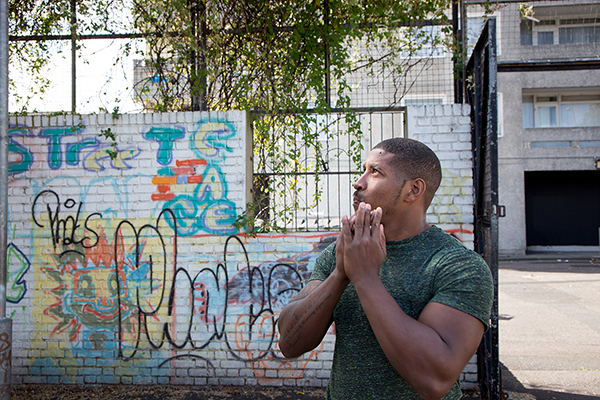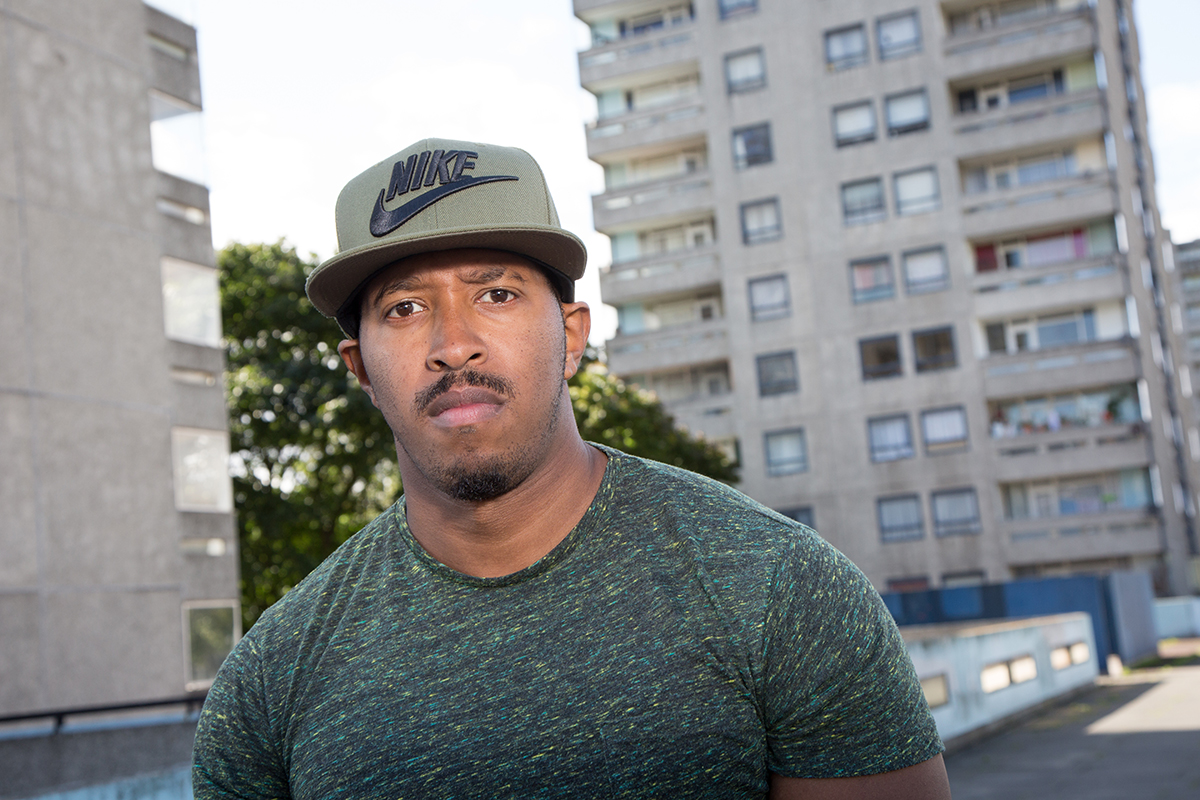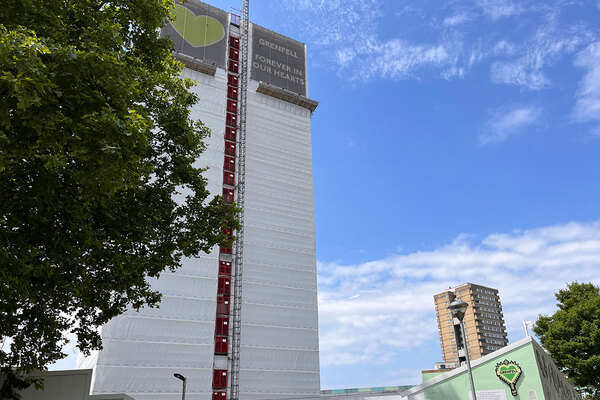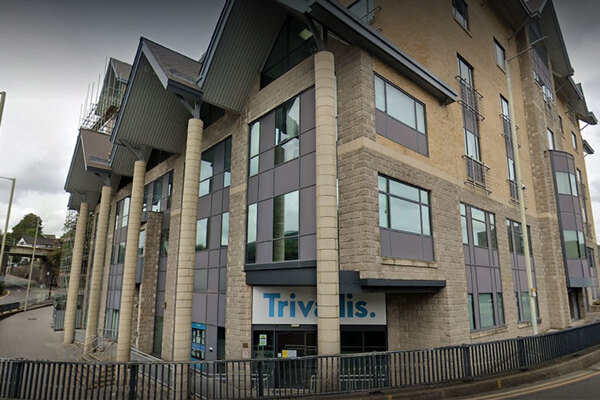You are viewing 1 of your 1 free articles
How social landlords can help people leave gangs
Former gang member Sephton Henry tells Danielle Aumord how social landlords can be a crucial help – or hindrance – to men escaping a criminal past. Photography by Jonathan Goldberg
Sephton Henry (pictured) was the founding member of a gang called the Woolwich Boys. “When I was groomed into selling drugs at the age of eight, I realised that I was being ripped off and made my own gang,” he says.
More than a decade later, he was 24 and had just left a young offender institution – his seventh stint in prison – when he decided he wanted to stop being a gang leader. “I decided to leave the gang life after I had a conversion to Christianity,” he tells Inside Housing.
Retiring from the gang wasn’t easy – and he says that being stuck in housing where he couldn’t escape his former contacts made it even harder.
Gang violence is on the rise. In 2016/17, the London Mayor’s Office for Policing and Crime recorded more than 12,000 knife crimes. As a result, social landlords across the country are increasingly involved in helping gang members turn their lives around.
Colin Lambert, 52, is an Enfield-based case worker at St Giles Trust, a charity that supports people affected by gang-related violence. “At any one time, I usually have two clients that need to move because of gang activity,” he says. “But some only want a move so that they can hide and then pop back up again. Many of them are still at it with the gang activity. For the move to be successful it has to be that they want to completely get out of gangs.”
Mr Henry, who is now 28, has been out of gangs for four years. Inside Housing meets him in Thamesmead, south London, to talk about his experiences. He’s not been back since quitting the gang; as we take photos, people who knew him from those days come over to greet him.
When Mr Henry left prison, the probation service didn’t help him find a place to live.
“They told me that I was too young for some housing schemes and too old for others,” he says. The London Community Rehabilitation Company didn’t respond to Inside Housing’s question on how it supports exiting gang members to access suitable housing. “I approached the council to help me the last time I came out of prison, but for whatever reason, I don’t know, they didn’t help me at that junction,” says Mr Henry. “Maybe because I wasn’t as aware of my rights at that point as I am now.”
He found himself shared accommodation through a personal contact. But he was well known as a former gang leader, and other tenants disclosed his address to enemies who were keen to reignite old feuds. Despite this, Mr Henry stayed there for three years. “I felt stressed and depressed,” he recalls.
By that point, he was working for national charity Gangsline, delivering workshops to school children at risk of gang activity, and providing one-to-one mentoring for teenagers and young adults trying to exit gangs. But his unstable housing situation made this hard to maintain. “I was at constant risk of violence and, as a result, my mind was not able to focus 100% on my job,” he says.
When his private landlord sent him a notice to quit, Greenwich – his local council – told Mr Henry that despite his status as a former gang leader, he wasn’t vulnerable enough for help.
Luckily, a support worker he had met previously managed to arrange a housing trust flat in an area where his old gang associates and enemies didn’t tend to venture. He moved into his new home last March. “I feel more stable now,” he says.
“I was at constant risk of violence.” – Sephton Henry
A Greenwich Council spokesperson says: “While we cannot comment on individual cases, gang members who approach us for urgent housing assistance are given wide-ranging advice and support, including providing advice on housing options and an assessment to see whether there is a requirement for us to provide temporary accommodation.”
It was too late to help Mr Henry, but in February 2015 Greenwich Council adopted the London Gang Exit protocol, launched by charity Safer London. The initiative means anyone aged 16 to 24 who is involved in a gang can get support to exit, no matter which London borough they live in. Individuals are supported to access safe, stable housing and encouraged into employment, education or training.
Sephton Henry on the Thamesmead Estate where he was once known as leader of the Woolwich Boys gang
The programme received £1m funding from the Mayor of London’s office for two years. Since the project started in February 2015, there have been 29 property requests for people at risk of gang violence. Of these applications, 12 received at least one property offer and two people have moved house.
Similarly to domestic violence victims, people fleeing gang violence can use reciprocal moves, which allow the person’s home borough to ask another council for an alternative home.
Safer London introduced a pan-London scheme in December 2016, making it easier for former gang members to make a fresh start. For example, if Camden gets a property from Islington, the council will owe a property to the London pot – instead of owing one to Islington, which was the previous arrangement. This provides more housing choices because the gang leaver’s home borough can reach out to any of the local authorities signed up to the scheme.
“They told me I was too young for some housing schemes and too old for others.” – Sephton Henry
Housing associations can also take part in the scheme, and a total of 67 social landlords have signed up. Richmond and Merton are the only councils in the capital that haven’t joined (Richmond didn’t respond to Inside Housing about why it is not involved, and in 2010 Merton transferred its stock to housing association Circle – now Clarion – which is signed up to the scheme).
A spokesperson for Safer London says: “Our experience so far has showed that it’s very important to have agencies involved that can provide risk assessments on the property offered to ensure that the risk of gang violence will not continue in the new borough.”
Southwark Council runs two schemes to help young people leave gangs: the Southwark Anti-Violence Unit and the Southwark Emergency Rehousing Victims of Violent Enterprise (SERVE).
SERVE is a 12-week programme for young people up to the age of 25, which includes finding them safe, permanent accommodation. Barrie Hargrove, cabinet member for communities, safety and leisure at the council, says the services “offer a proactive alternative to gangs and violence”.
Southwark’s housing policy also states that tenants can be urgently rehoused if their lives are under threat in the area they currently live in. But such moves can be hard to pull off. A spokesperson for Hackney Council explains: “We will look at what geographical links the person has, in terms of the gang they’re trying to escape from, but it can have limited success because some gang members have strong emotional ties to their home community and ultimately decide that they don’t want to leave.”
Gang violence isn’t just a London problem, though. In Birmingham, Liberal Democrat councillor Morriam Jan has a particular interest. “I’m working to try to move a few of my constituents somewhere else, to give them a fresh start.
“We will look at what geographical links a person has.” – Hackney Council spokesperson
One lad even got shot because he wanted to leave a gang,” she says.
Local charity Bringing Hope works with people coming straight out of prison. Co-founder and co-director Carver Anderson says: “In the past 18 months we’ve had 54 recorded gun discharges and 17 murders – either caused by guns or knives.” (West Midlands Police tells Inside Housing these figures are speculation. The police can’t give a figure for the number of offenders involved in gangs. A spokesperson says: “We haven’t said that these gun discharges are gang related.”)
Many of Bringing Hope’s clients have been gang members and Robin Thompson, executive director and co-founder, suggests that social landlords could reserve a percentage of their stock for “complicated individuals, to give them a second chance” as one way to help rehabilitate former gang members.
“It’s difficult to find appropriate accommodation; offenders tend to be released to bail hostels to keep them in a controlled environment but often this leads them into more criminal activity because they are living with other people who have come from prison and may still be living a criminal lifestyle,” he explains.
Inside Housing meets another exiting gang member, 32-year-old Mikel (not his real name) in Birmingham.
“I don’t feel like there’s a solution right now in terms of appropriate housing for people exiting gangs,” he says. “They offered me shared accommodation to get started. My offender manager knew that it was inappropriate but he admitted that this was all he could offer. These places are filled with drug addicts and other offenders. Living in an environment like that would lead me back to criminal activities, back into gang activity, so I choose to sofa surf instead.”
Many gang workers in Birmingham think that what’s needed is appropriate accommodation in appropriate areas. Birmingham City Council didn’t respond when Inside Housing asked about its social housing policy for people fleeing gang activity, making it difficult to assess whether this is being implemented.
“Housing trusts might be worried that gang leavers are going to bring trouble.” – Morriam Jan, Birmingham City Council
The biggest association in the area is Midland Heart, with 32,000 homes. We asked if it had a policy on housing people leaving gangs, and how many people it had housed, but the housing association didn’t respond.
“Housing trusts might be worried that they are going to bring trouble. They might be worried about whether the other tenants and their staff will be safe,” Birmingham Council’s Ms Jan speculates.
Nationwide, it is difficult to assess how many people are in need of specialised support or housing. Much of the available research concerns minors or women, and much of the help available is targeted at these groups – for good reasons.
“Women and younger gang members aged 13, 14 and 15 are often used to store guns and drugs in their homes,” explains Mr Lambert. “Having guns in the home puts children at risk, especially if the woman decides to talk about who gave it to them – they wouldn’t be able to go back to their home community because they would be labelled a snitch.
“If the children are under the age of 16, then the whole family are automatically involved and their case for a housing transfer would be looked at in the light of ongoing safety for their siblings and the whole family.”
A report by the Children’s Commissioner for England in July 2017 revealed there were 46,053 10 to 18-year-olds in gangs in England.
But many people affected are adult men. According to the Ministry of Justice, as of 31 March 2017 there were 1,954 offenders managed by probation in the community who were recorded on a case management system as either involved in “street gangs” or “gangs and guns”.
For these men, moving house may be key to starting a new life, but making this happen is still difficult. “I have to present the cases of my clients on an individual basis. Sometimes at the council’s homelessness unit, they say that this person is in a situation of their own making,” says Mr Lambert.
“People affected by gangs are not popular for help or housing; they are not at the top of the list for help with housing at all. In fact, they’re at the bottom.”
Update 30.1.18 This article originally stated that Inside Housing asked the landlord Midland Heart if it would allocate a percentage of its stock to people leaving gangs. It has been updated to reflect more accurately the language of the question asked. Midland Heart has offered no response.
